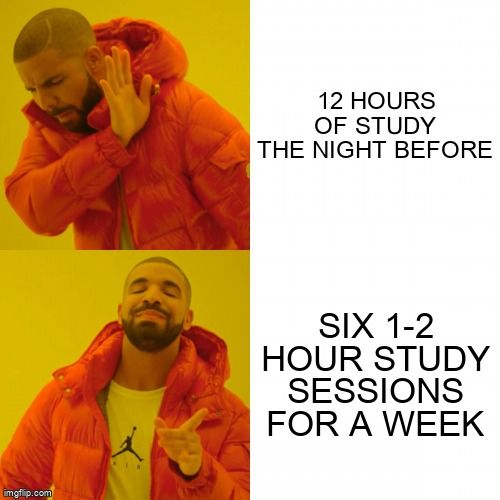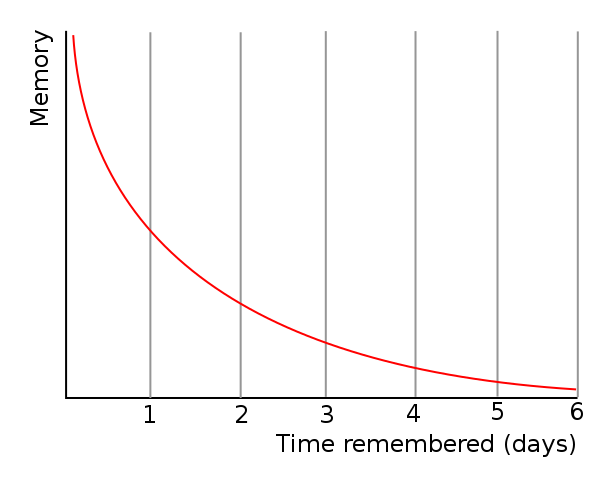Have you ever had a cram study session before a big exam?

Surely, if you have, you might have aced that exam! But do you still remember what you learned to this day?

Don't feel too bad if that's the case, as cram sessions aren't helpful for storing knowledge in your long term memory.
Had you used spaced practice instead, you'd be telling a different story.
What is "spaced practice"?
If "cramming" means studying all the information you need during one very long session before you need to recall it, "spaced practice" is the complete opposite.
Spaced practice is a strategy where you space out your study sessions over a long period of time.
Spreading out your studying over six days for 1-2 hours a day is more helpful for storing information into your long-term memory than a single 12-hour cram session!

Why spaced practice is beneficial
In the 1890's, Herman Ebbinghaus first described what we now call the "forgetting curve." He showed how fast information fades after learning it for the first time and how if you review it again and again, the information begins to fade more slowly.
 Image Source: Wikimedia Commons
Image Source: Wikimedia Commons
There are 3 ways spaced practice helps you overcome the forgetting curve:
Resting makes it easier for our brains to retain information. Resting after studying something once helps. Each and every rest after studying something over multiple days helps even more!

As we re-study something, our brain reconstructs both the information itself and the pathway in the brain that leads to that information. This makes retrieving the information easier and easier after each and every exposure.

Each study session takes place in a different context. Learning in different contexts teaches us to approach information in different ways.

How to use spaced practice effectively
After you first learn new information, you should build a study plan.

To make the most of your studying:
Plan for short, frequent study sessions beginning from when you first learned the information until the time you'll need it most.
Change up the amount of time between sessions. For example, first study the information one day after you learn it, then two days later, then three days later, and so on.
Whenever you study a lot of previously learned material, review the oldest material first and work your way forward to the material you learned most recently.
Think critically about how older and newer information connect.
Create summaries of everything you learn.
Quiz
Taylor wants to create a study plan for her next exam. Which strategies should she include in her plan?
An example plan
The semester is nearing its end and you've got fifteen days until the final exam. Your class, Defense Against the Dark Arts, has been a doozy and you've got a lot to review. But don't worry, you've got the perfect study plan!

 Day 1
Day 1
Start your review with the first unit from the semester: History of the Dark Arts. Then you move on to units two and three: Counters and Hexes, respectively.
Think critically about how the counters and hexes came to be based on the history of the dark arts that you learned. Think about the figures in history you may have had to use counters and hexes against.
The study session lasts about two hours.
 Day 2
Day 2
Review the material and write a one-page summary about it.
 Day 4
Day 4
Review the material again and have a friend quiz you on it.
 Day 8
Day 8
The day before, you were introduced to the fourth and final unit: Unforgivable Curses. Review all of the previous units in chronological order before reviewing yesterday's new material.
Think critically about what kind of counters you might use against an Unforgivable Curse. Think about the historical factors that gave rise to dark lords and their curses.
 Day 10
Day 10
Review the fourth unit's material and write a summary.
 Day 14
Day 14
Review all of the units one last time in sequential order. Have a friend quiz you.
 Day 15
Day 15
Ace the test!
Take Action
Are you ready to make information stick?

Use the spaced practice strategy so you never forget what you learned!
Your feedback matters to us.
This Byte helped me better understand the topic.
